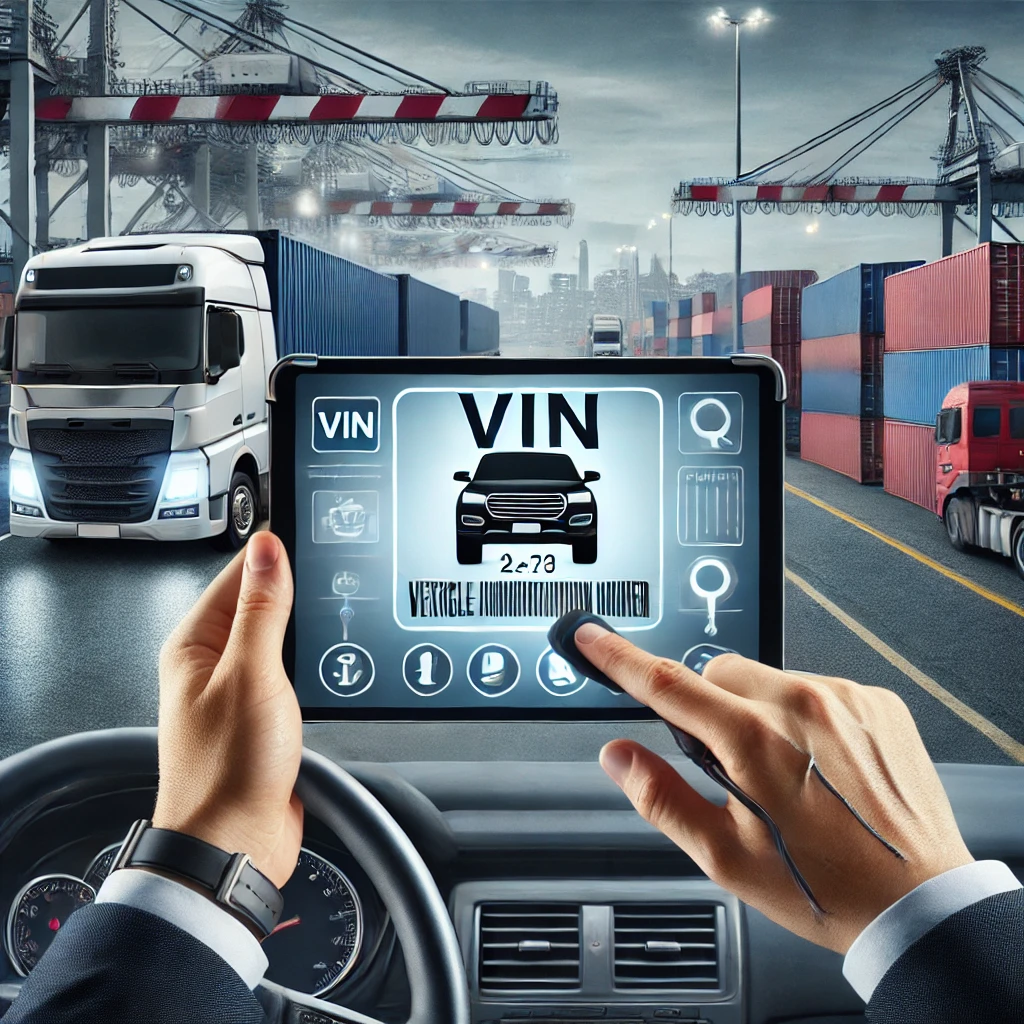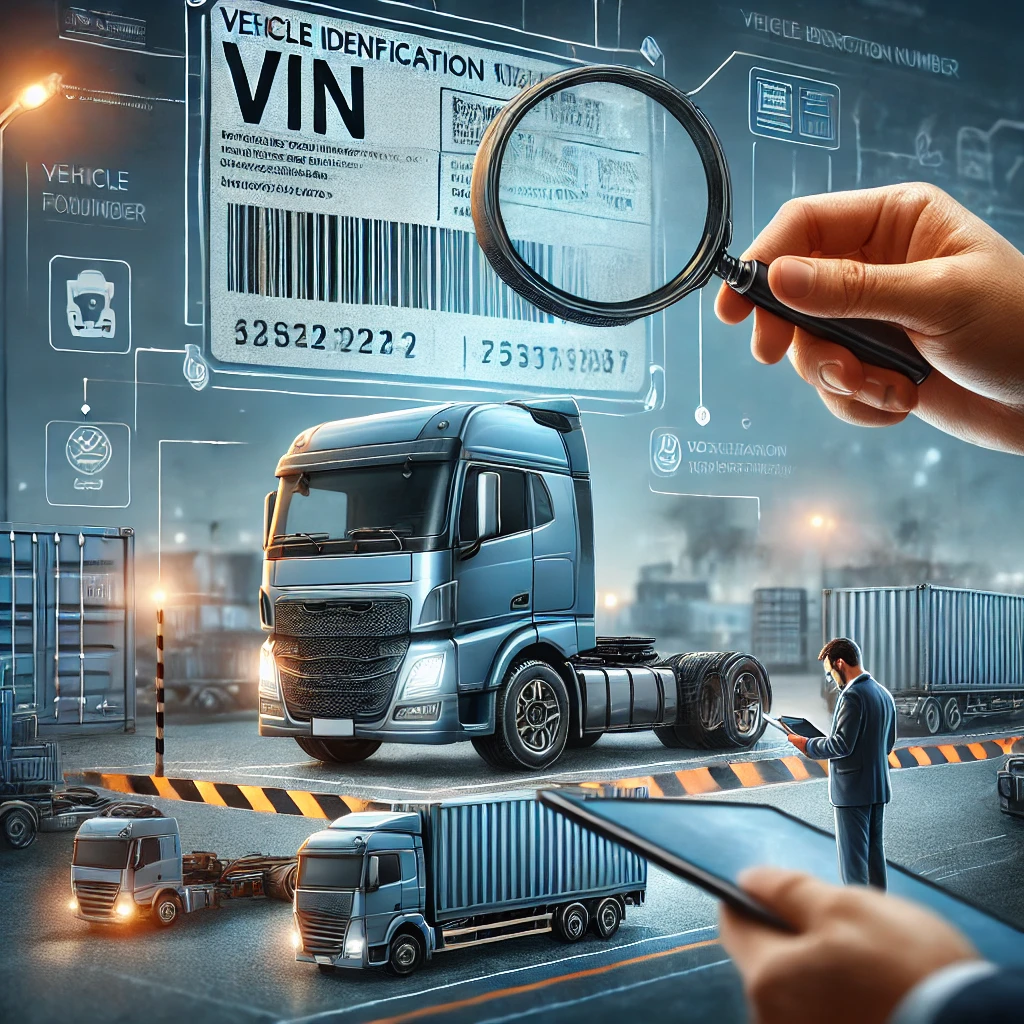Verifying VINs for Free: Tools for Freight Forwarders

Understanding the Importance of VIN Verification
- Fraud Prevention: Detect stolen or fraudulently registered vehicles
- Accuracy in Documentation: Ensure all shipping paperwork matches the vehicle
- Compliance: Meet regulatory requirements for vehicle transportation
- Customer Trust: Provide assurance of legitimate and accurate service
- Operational Efficiency: Reduce errors and delays in the shipping process
Verifying VINs for Free Tools

1. National Highway Traffic Safety Administration (NHTSA) VIN Decoder
- Website: NHTSA VIN Decoder
- Features:
- Basic vehicle information
- Manufacturer details
- Compliance with U.S. safety standards
2. Vehicle History Report Providers
- Websites: Various providers offer limited free reports
- Features:
- Basic ownership history
- Accident reports
- Title information
3. State DMV Websites
- Many state DMVs offer free VIN checks
- Typically provides information on:
- Registration status
- Stolen vehicle status
- Lien information
4. Insurance Company Tools
- Some insurance companies offer free VIN checks
- Often includes:
- Vehicle specifications
- Safety ratings
5. Manufacturer Websites
- Many car manufacturers provide free VIN lookups
- Offers:
- Detailed vehicle specifications
- Recall information
6. Online VIN Decoders
- Various free online tools decode VIN structure
- Provides:
- Breakdown of VIN meaning
- Basic vehicle information
How to Use Verifying VINs for Free
- Gather the VIN: Ensure you have the complete, correct 17-character VIN
- Choose a Tool: Select the appropriate free tool based on your needs
- Enter the VIN: Input the VIN into the chosen platform
- Review Results: Carefully examine the provided information
- Cross-Reference: Use multiple tools to verify information accuracy
- Document Findings: Record the verification results for your records

Best Practices for VIN Verification
- Regular Checks: Implement routine VIN verification in your processes
- Staff Training: Educate team members on proper VIN verification procedures
- Data Security: Protect VIN information and comply with data privacy regulations
- Update Procedures: Stay informed about new verification tools and methods
- Combine Resources: Use a mix of free tools for comprehensive verification
- Be Wary of Red Flags: Watch for inconsistencies or suspicious information
Limitations of Free VIN Verification Tools
- Limited Information: May not provide comprehensive vehicle history
- Potential Inaccuracies: Information might not always be up-to-date
- Restricted Access: Some tools may have usage limits or require registration
- Lack of International Data: Many free tools focus on U.S. vehicles only
- No Guarantee: Free services often come without guarantees of accuracy
When to Consider Paid VIN Verification Services
- High-Value Shipments: For expensive or luxury vehicles
- International Shipping: When dealing with vehicles from multiple countries
- Large Volume: For businesses handling numerous vehicles daily
- Legal Requirements: When more detailed reports are required for compliance
- Suspicious Circumstances: If free tools reveal potential issues needing further investigation

Integrating VIN Verification into Your Workflow
- Automate Where Possible: Use software that can automatically verify VINs
- Create Checklists: Develop standard procedures for VIN verification
- Establish Verification Points: Determine key stages in your process for VIN checks
- Record Keeping: Maintain a database of verified VINs and their information
- Client Communication: Inform clients about your VIN verification processes

Future Trends in VIN Verification
- Blockchain Technology: For more secure and transparent vehicle history records
- AI and Machine Learning: To detect patterns and anomalies in VIN data
- IoT Integration: Real-time VIN verification through connected devices
- Enhanced Global Databases: Improved international VIN verification capabilities
- Biometric Integration: Linking VINs with owner biometric data for added security
Conclusion
Free VIN verification tools offer freight forwarders a valuable resource for ensuring accuracy and compliance in vehicle transportation. While these tools Verifying VINs for Free have limitations, they provide a solid foundation for basic VIN checks. By incorporating these free resources into your processes and understanding when to supplement with paid services, you can enhance your operational efficiency and maintain high standards of service in vehicle logistics.
For freight forwarders looking to streamline their VIN verification processes and integrate them seamlessly into their operations, Linbis offers advanced software solutions. Our platform can automate VIN checks, integrate verification results into your workflow, and provide comprehensive vehicle data management. To learn how Linbis can enhance your VIN verification and overall freight forwarding operations, contact us today for a personalized demonstration.
